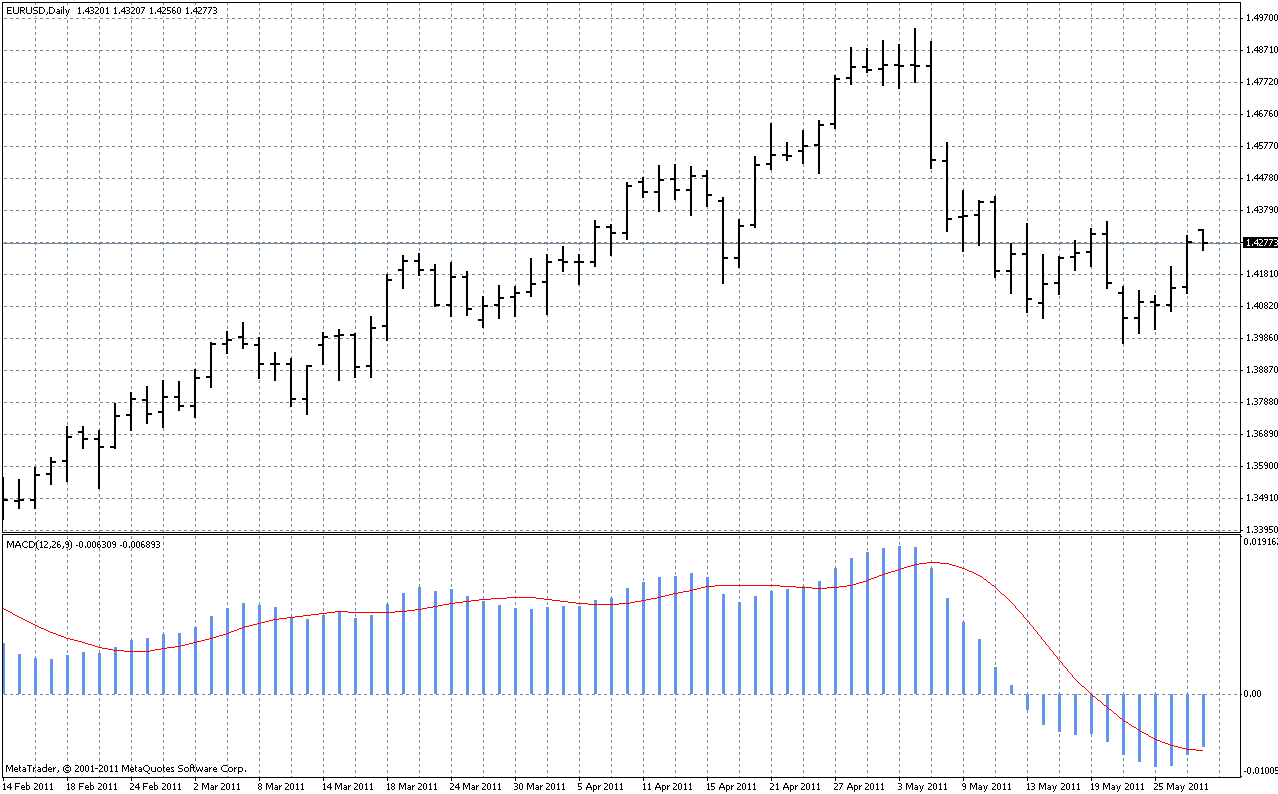What is the MACD Indicator?
The MACD or Moving Average Convergence Divergence indicator is a combination of a histogram and a signal line that was originally invented by Gerald Appel. Since he introduced this important indicator to the financial markets, the MACD has become one of the most popular technical indicators currently in use among forex traders.
Due to its widespread popularity and versatility, the MACD histogram is often incorporated into technical trade plans and mentioned in technical forex market commentaries. Furthermore, most technical analysis systems and forex trading platforms provided by an online forex broker will include a calculation of Appel’s MACD indicator.
The MACD histogram is usually shown visually in an indicator box beneath the price action depicted on an exchange rate chart for a particular currency pair. The MACD histogram will also generally employ the same time scale and periodicity as the bar or candlestick chart to which it corresponds and is displayed below.
Computing the MACD
The histogram of the MACD indicator is usually calculated in a standardized way by the technical analysis systems provided by forex trading brokers by taking the difference between two moving averages.
Most forex traders will use a slower 26 period exponential moving average or EMA and a faster 12 period exponential moving average for this histogram calculation to match the parameters originally suggested by Gerald Appel.
In addition, a MACD trigger line that represents the moving average of the histogram can also be computed, and crossovers of this line with the MACD histogram are typically also monitored by traders using the MACD when forex trading online. A parameter value of 9 periods for this additional smoothing moving average signal line would be typical.
Furthermore, unlike normalized oscillators that have values which fluctuate between 0 and 100, the value of the MACD is not bounded by any value in particular, although it tends to trade within ranges that depend on the instrument involved. High historical values for the MACD histogram would therefore indicate an overbought market, while low historic MACD values tend to indicate an oversold market.
Sample Chart of the MACD Histogram

Diagram #1 above shows a daily price chart of EURUSD with the (12,26,9) MACD Histogram plotted in pale blue lines underneath the price action in the indicator box. Also included is a solid red MACD trigger Line that can provide additional trading signals.
Applications of the MACD
The MACD histogram is one of the most versatile and useful indicators used by forex traders. For example, this helpful unbounded oscillator is frequently employed when forex trading online by traders who wish to:
- Follow trends,
- Forecast trend reversals,
- Identify overbought and oversold markets,
- Confirm signals generated by other indicators, or
- Use it as a complete trading signal system.
When used as a forex trading signal generator, traders might watch for the MACD histogram to cross over the zero line to reflect the fact that the values of these two moving averages are temporarily equivalent. Such a situation is known as a crossover and helps the technical analyst generate useful trading signals.
Typically, buy signals are generated when the faster EMA crosses above the slower EMA so that the MACD histogram goes from negative to positive. Conversely, sell signals are generated by the faster EMA crossing below the slower EMA that causes the MACD histogram to go from positive to negative. Also, some traders watch for the value of the red trigger line to cross over that of the MACD histogram to generate buy and sell signals in a similar way.
For more exclusive content, follow us on Twitter or join us on Facebook.


























Comments (0 comment(s))